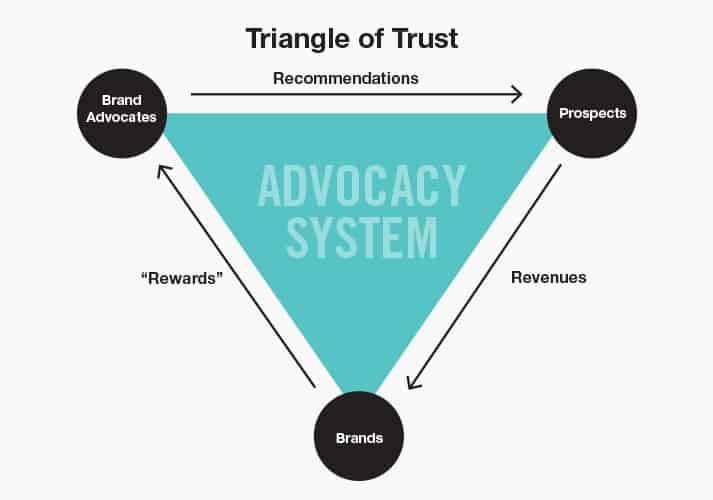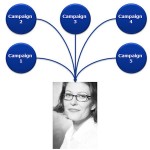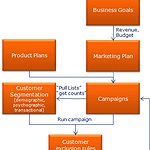Marketers dream of having people promote their brand for free, and having your social media pages filled with glowing reviews and brand mentions from avid fans.
With the power of advocacy marketing, this dream can become a reality.
Advocacy marketing is the process of making customers (or employees, partners, investors, etc.) happy so you can capitalize on that happiness to help you achieve your business’s sales goals.
Today’s buying journey is a lot more customer-centric, which is why most organizations can benefit from using customer advocacy programs designed to boost brand authenticity through quality content, social validation, and referrals.
In this article we discuss what advocacy marketing is, how it benefits your business, and the different advocate marketing techniques you can use to get the results you want.
What Is Advocacy Marketing?
Advocacy marketing (or advocate marketing) is a type of marketing that transforms your best customers into Brand Ambassadors.
In a nutshell, it encourages others to advocate for your brand through a carefully considered marketing strategy.
Similar to word-of-mouth marketing, advocacy marketing allows you to harness the voices and experiences of your most enthusiastic customers in order to power your marketing strategies.
The primary purpose of B2B advocacy is to create Brand Ambassadors who voluntarily share your brand with their networks, and positively discuss your products and services with their professional colleagues.
When used correctly, this type of marketing will increase awareness of your brand and generate higher levels of engagement, which ultimately leads to more sales.
Why Advocate Marketing so Effective
One of the reasons this type of marketing is seen as a “holy grail” is that it’s cost-effective and high-yielding.
With social media, these word-of-mouth recommendations now travel further than ever before.
The average social media user is connected to over 400 friends, so each advocate who shares their positive experience has the potential to reach over 400 others.
With 10 advocates, you could reach 4,000 users and with 10,000 advocates, your potential reach would be over 4 million!

The best part is that your advocates’ messages are more authentic than your messages because they are driven by real human connections. This makes them more effective than paid ads.
Recent studies show that 76% of survey participants say they place more trust in content shared by people compared to content shared by brands.
Benefits of Advocacy Marketing
The key benefits of creating B2B brand ambassadors are:
- Cost-Effective Marketing: Advocate marketing offers an average ROI of 650% for each dollar spent, making it an extremely lucrative marketing strategy.
- Asset Creation: Brand ambassadors are valuable, well-versed assets that will not only help promote your brand but also spend more on your products or services.
- Increase Customer Engagement: A robust advocacy program will help you regularly engage and connect with B2B customers to make them feel heard and appreciated, resulting in more customer satisfaction and decreased churn.
- Boosting Brand Recognition And Awareness: More people notice your brand by starting natural, organic conversations around your products or services.
- Increased Brand Trust: When others advocate for your brand, it sends a signal of trust and reliability to the rest of your audience and your brand feel less like a business and more like a trusted community
- Reach a Wider Audience: Each person that advocates for your brand helps to connect you with hundreds or even thousands of other people in their networks, expanding your brand’s reach and exposure.
- Accelerate Sales Pipeline: When you can show potential buyers advocate social proof (e.g. case studies, reviews, references, etc.), it helps to enhance their trust in your solution, decreasing the length of time to make a buying decision.
- Have a Positive Impact on SEO – The advocate’s interaction with your content and mentioning your products or services on their resources is also important to search engines and could bring some positive value to your website rankings.
- User Generated Content or UGC: Advocacy marketing facilitates the creation of user-generated content which can be cross-shared and used by the brand for a variety of marketing purposes as social proof, email marketing, brand reputation management, conversion rate optimization, and much more.
With so many people advocating for your brand, creating authentic content and reviews of your products and services, this content generates free brand marketing without having to spend a cent on influencer marketing campaigns.
In other words, you get to build a stronger following among your clients and leads while keeping your overhead minimal.
Advocacy Marketing Techniques
There are many articles outlining advocacy marketing tips, tricks, strategies, best practices, etc. But, at it’s core, advocacy marketing comes down to being able to inspire others to continually advocate for your brand.
The formula for successful advocacy marketing is:
- Step #1: Offer them something they value or want.
- Step #2: Provide them with a variety of methods to advocate.
- Step #3: Offer recognition for those who advocate for you.
This image illustrates it perfectly:
Looks simple enough.
Except that you need to tailor your advocacy marketing strategy specifically to B2B brand ambassadors.
This is important for a number of reasons.
For example, if you sell products or services to a particular company and one of the employees leaves to work for a different company – that person can then become an advocate for your brand at their new organization.
However, attracting and recruiting B2B brand ambassadors is a little more challenging. Your best hope of accessing them is by implementing an aggressive client nurturing program.
This way, when they do leave their current place of employment they take with them a strong impression of your brand, products, or services.
But, before you can implement your advocate marketing strategy you must first find ambassadors.
Here is where you will find your B2B brand ambassadors:
- Social Media: This is the best place to find people who actually like your brand and those who are already actively promoting you.
- Review Websites: Search for people who are talking about you on review websites.
- Email Correspondence: If you have pleasant emails that come in, those people are likely to make ambassadors for your brand.
- NPS Scores: let you know know exactly who says they would happily recommend your brand to others.
- Recent Interactions: PPhone calls or face-to-face interactions where customers expressed excitement or gratitude for your brand.
- Online Training Courses: If you use online course platforms to educate others, you already have a group of people that are interested in the content you produce and who believe you have knowledge that is valuable to share.
Once you’ve found your brand’s superfans who are not only using your products or services but also actively praising them, you can use the following techniques to supercharge your advocacy marketing to create B2B brand ambassadors.
1. Incentivize Your Ambassadors
Regardless of where you find your brand ambassadors, the important thing is to keep them engaged, involved, and incentivized.
In other words, provide them with a reason to share.
While, advocate marketing is not based on people spreading the word simply because they are provoked by incentives (as in Influencer Marketing), it shouldn’t be a one-sided relationship, either.
Whether the rewards are physical or intangible, e.g. recognition on social media, they should recognize and appreciate Brand Ambassadors efforts at spreading the word about your brand.
2. Make Referrals Fun
You also need to make referrals fun. Remember, these people are already talking about your brand simply because they believe in it and you don’t have to do much convincing to get them to continue to do so.
But, you can make it fun for them. For instance, Blackbaud, a company that won the Best Referral Program Award did so by creating a series of engaging and fun challenges for customers to complete through the brand’s advocacy marketing program; Blackbaud Champions.
Each time a member completes an act of advocacy, they receive rewards and recognition. There is also a month-long contest with prizes for members who have the most referrals, which makes it a lot more likely that brand ambassadors will stick with the program for longer.
3. Make it Easy to Share
The more content you make accessible to your brand ambassadors, the easier it will be for them to share online.
This way, your advocates can take the lead and be the stars of your content while allowing you to have some measure of control over the type and quality of content they share.
For instance, HootSuite has a robust advocate marketing program where the brand creates content for its super users (known as HootSuite Ambassadors). Members of the program are encouraged to share new content from HootSuite as well as from the ambassadors.
4. Create Communities
Another effective advocacy marketing technique is to create online communities around your brand, products, or services.
This can range from a simple social media group to using website builders to create a central hub for brand ambassadors for sharing knowledge and experience to brand ambassadors within your digital community.
If you can connect your local or global user community with your brand’s super users, you make it more likely that you’ll be able to transform more satisfied customers into brand advocates and B2B ambassadors.
Creating a sense of community between your users and ambassadors will also result in more social impressions and content shares across all your social media channels. Share content regularly on such communities with the help of social media planning tools to get more engagement.
Examples of Great Advocacy Marketing
Here are three inspirational examples of brands that have seen massive success from their customer advocacy programs.
1. Apple
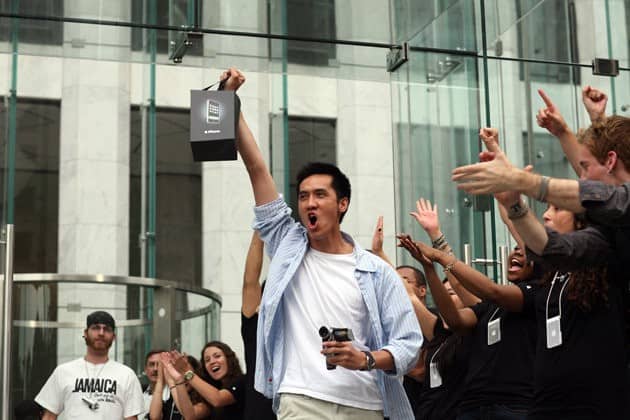
Apple created an advocacy marketing program that helps to bring together a loyal group of customers and avid brand ambassadors who absolutely love to talk about Apple’s products to their friends and peers.
It goes without saying that these recommendations are pivotal in helping the company to drive more revenue and sales.
2. InsightSquared
This brand had an objective to increase its presence on TrustRadius, G2 Crowd, GetApp, and various other review websites.
So, they created an advocacy marketing strategy aimed at requesting reviews from customers with the help of current brand ambassadors.
The marketing team hoped to get 10 reviews across each review website in three months, but instead, they received over 100 customer reviews in a very short space of time, which also became a driving force for additional sales.
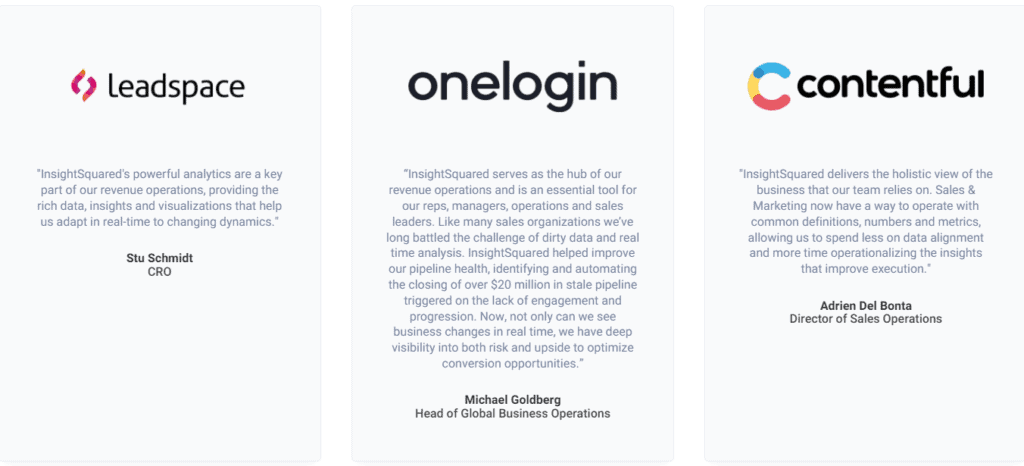
Guest Author: Ron Stefanski
Ron Stefanski is a website entrepreneur and marketing professor who has a passion for helping people create and market their own online business. You can learn more from him by visiting OneHourProfessor.com


